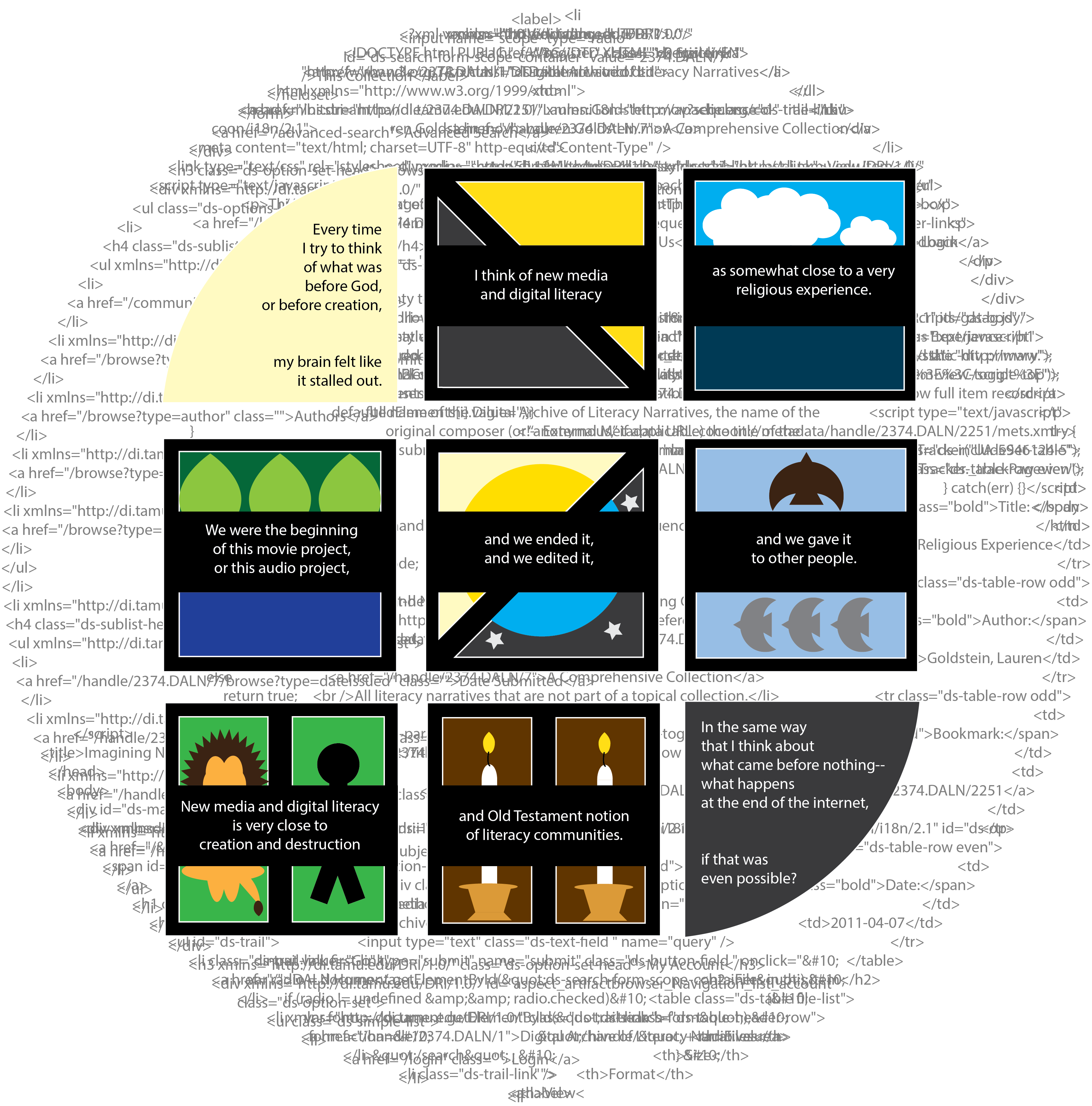
Introduction | Sequence | Religion in Composition Classrooms | Sharing Others' Stories | Multiple Media | Multiple Cultures | Case Studies | Anonymous | Lauren Goldstein | Charissa Coleman Muhammad | Elizabeth Jones | Final Thoughts

Reflect Lauren’s literacy narrative incorporates many different themes: coming to an understanding of and asserting her Jewish identity, especially in the face of opposition; the spiritual and intellectual mentorship at the heart of her new relationship to organized religion and the Jewish community in Omaha; trying to wrestle with the idea of what comes before nothing, especially in connection to the internet; and using scriptural imagery to frame her experience of new media creation. Since I’d already explored themes of spiritual mentorship in working with Anonymous’s narrative, I chose to focus on Lauren’s reflections on new media creation as religious experience and wrestling with the internet as a metaphor for existence. Focusing on her theme of digital composing as a sort of “Old Testament” notion of “creation and destruction,” what came to mind for me were the creation stories from Genesis. In researching these stories, I encountered images of spheres rigidly organized into neatly separated segments, depicting “reconstruction[s] of ancient Hebrew cosmology” (Boadt, Clifford, and Harrington 92). I decided to map segments of Lauren’s narrative onto a sequence of relatively iconographic images representing the Genesis creation story.
To keep some of the elements of destruction, though, I framed the creation images with wedges pulling away at the stability of the squares, in the same way that Lauren frames her narrative with questions of “what comes before nothing.” These corner images pull the squares towards a larger sphere in the background filled with the HTML source code from Lauren’s DALN webpage—which, for me as distant audience, is the mediating base through which her story exists. In the illustration, the source code provides a semi-transparent background that questions the opaque stability suggested by the brightly colored creation images. At the same time, these framing corner images bear the same colors and diagonal arrangement as the middle creation image, pulling back towards the center in what hopefully becomes a dialectic between stability and ephemerality, between creation and destruction, similar to the religiously inflected experiences of digital composing that Lauren describes in her narrative.
Respond